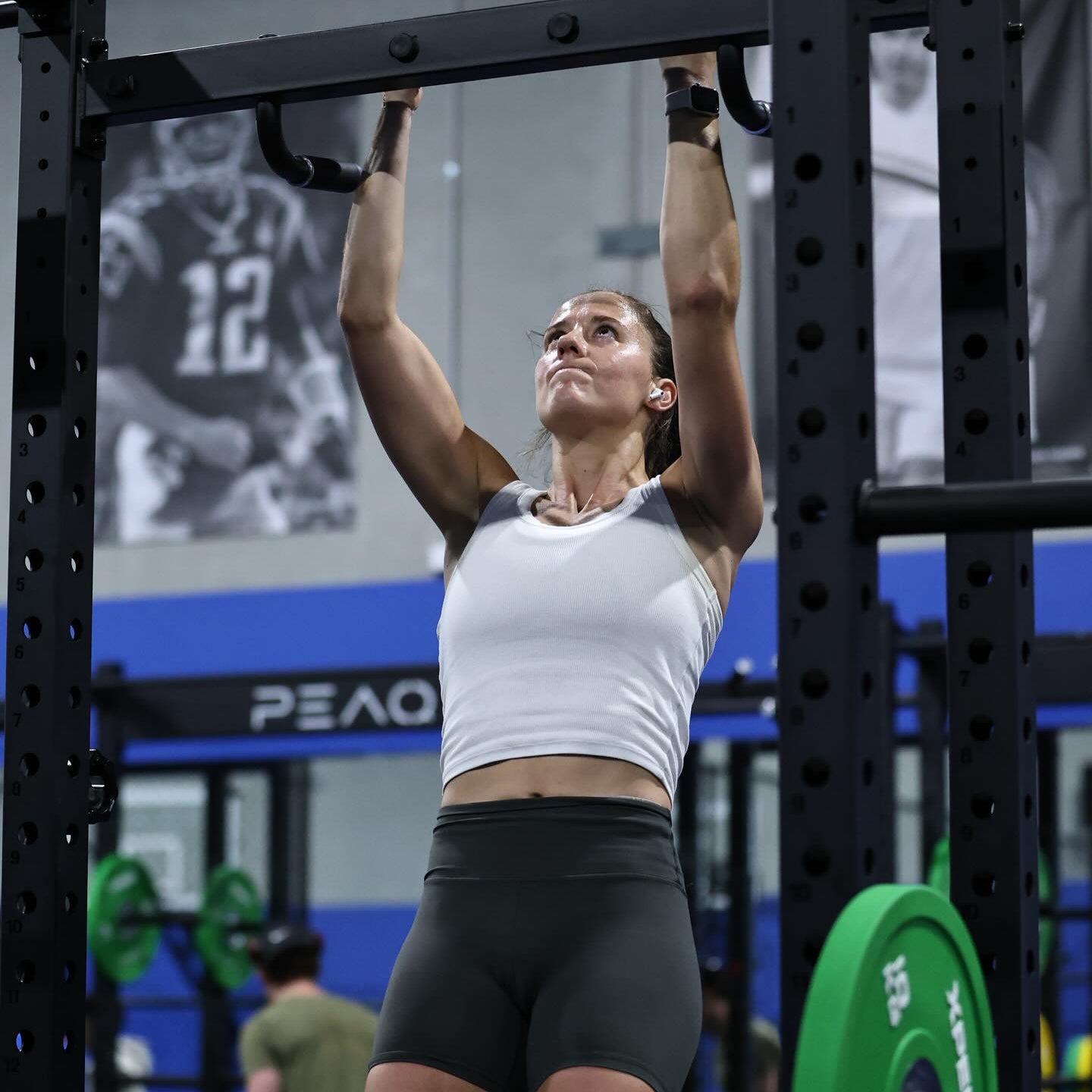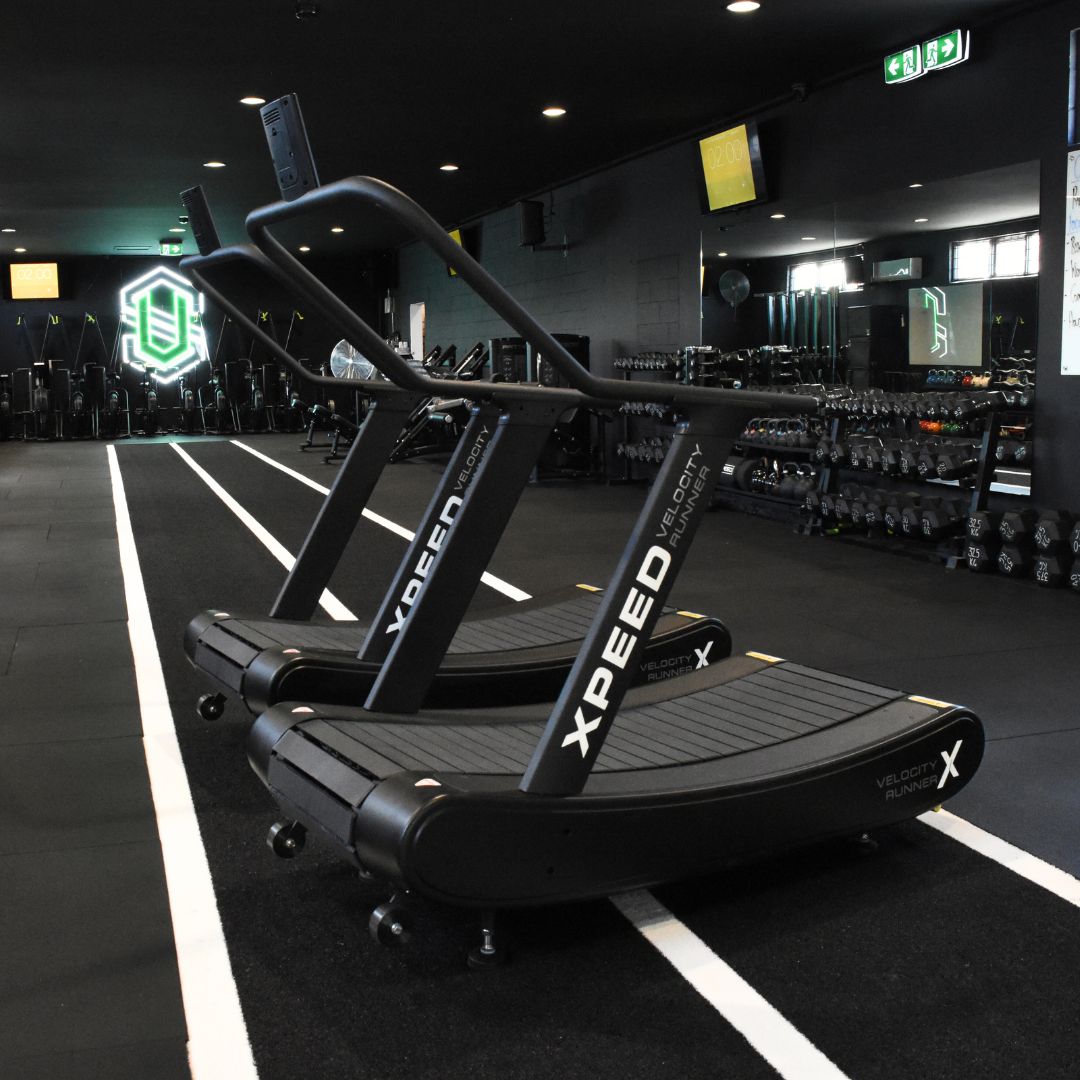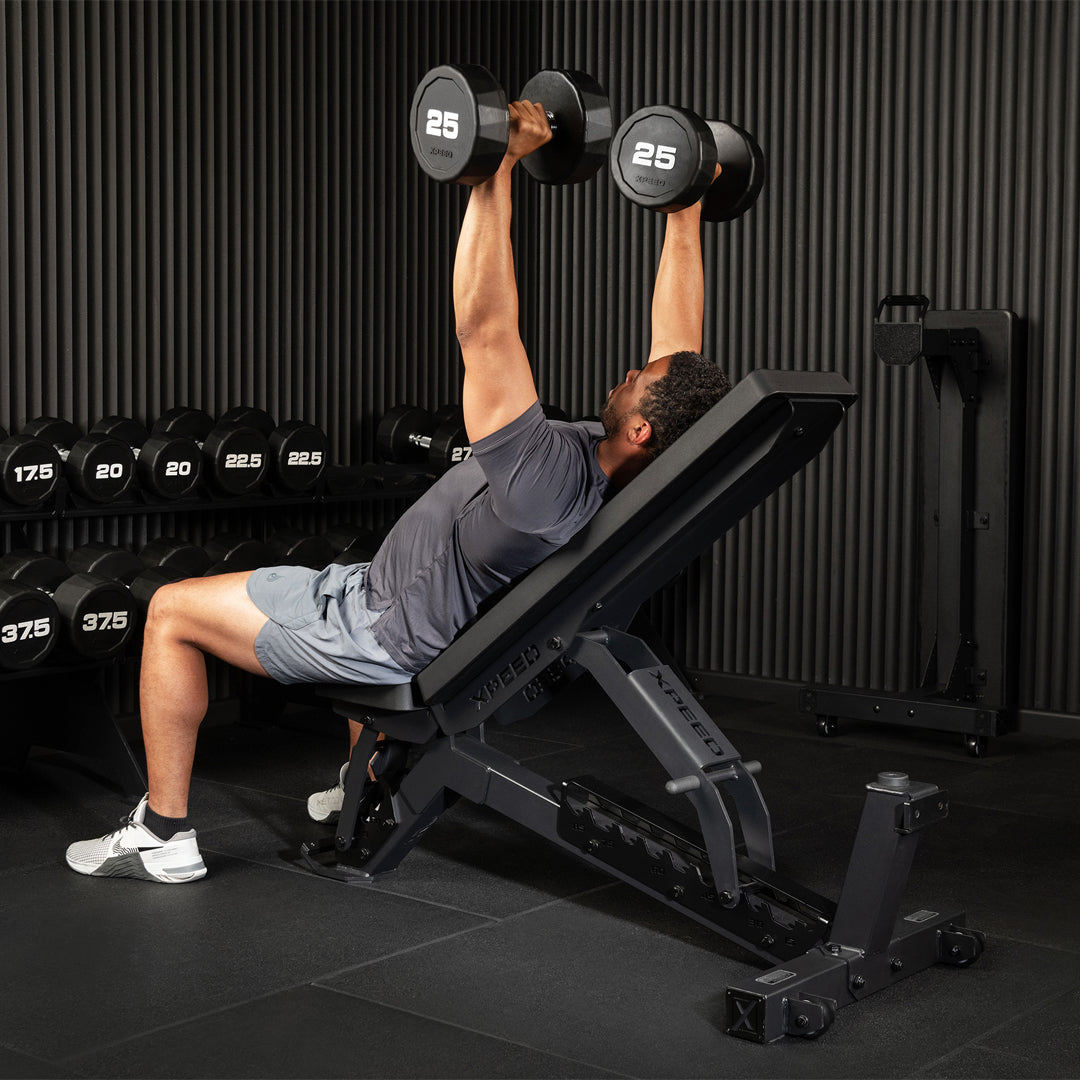Overview
- Train for strength without size: Use low-rep, high-weight methods and longer rest intervals.
- Know your goal: Understand the key differences between strength training and hypertrophy.
- Practical advice: Get tips to boost performance and functional strength without bulking up.
Variety Is The Spice Of Life
How Do I Build Strength, Not Bulk?
As we head into the middle of the year, it's a perfect time to reassess your goals and make adjustments to stay on track. Recently, a question from curious customer David, of Norwood, South Australia, reminded us of a famous quote: "Variety is the spice of life."
In our Xpeed Survey, David asked, "How can I build strength without gaining weight?"
This sentiment holds true for your health and fitness journey as well. In this blog, we'll explore why diversifying your fitness routine is crucial for long-term success and how it helps you avoid bulking up or gaining too much muscle mass, if that's your goal.
Understanding Strength vs. Bulk: First things first, it’s important to understand that the extent of muscle bulk or weight gain can vary based on individual factors such as genetics, training intensity, nutrition and specific fitness goals. Some people may naturally lean towards gaining more muscle mass, while others may prioritise strength gains without a substantial increase in muscle size. The information we’ve put together in this blog supports overall strength development and fitness improvements while allowing you to tailor your goals and preferences based on your desired outcomes.
Early Training Priorities

Early Training Priorities: Alright, here comes the boring stuff, you know, the work you probably don’t want to pay attention to! But it’s important - When you’re looking to increase strength, there are a few things to prioritise at the beginning of your journey: Mobility, Weak Links and Stability.
Mobility: Before exploring strength training and explosive movements, it's vital to prioritise mobility work. Why? Enhancing mobility through dynamic stretching, foam rolling and mobility drills, prepares your joints, muscles and connective tissues for the movement patterns ahead in your training. Improved mobility not only reduces the risk of injuries but also ensures proper technique and range of motion during exercises. Incorporating mobility exercises targeting specific areas such as your hips, shoulders and thoracic spine can significantly enhance your overall movement quality, allowing you to perform strength and explosive exercises more effectively. Begin your workouts with a focused mobility routine to optimise your body's readiness for the demands of training.
The most important sentence that you’ll read in this blog is: "Focus on fixing mobility issues before layering new patterns on top." If you don't correct your mobility issues, your body will layer new movement patterns on top of poor mobility, which can often lead to compensation and injury.
Where to start? Replace static stretching with dynamic warm-ups before your strength training sessions. Static stretching before workouts can negatively impact strength, power and agility. Save static stretching for post-workout recovery.
Fix Mobility Issues First

Weak Links: Identifying weak links is essential for addressing muscle imbalances and improving overall strength and stability. For example, if your quadriceps are significantly stronger than your hamstrings, it can create an imbalance that may lead to issues like knee pain or reduced athletic performance. Similarly, weak links can exist in the muscles responsible for stabilising joints, such as the rotator cuff muscles in the shoulders or the core muscles in the trunk. By focusing on fixing weak links, you can drastically improve your strength potential.
Stability: Once you've worked on mobility and addressed weak links, the next step is to focus on stability. Stability refers to your body's ability to maintain proper alignment and control during movements, especially under load or during dynamic exercises. Building stability is crucial for preventing injuries, improving performance and enhancing overall strength.
Maintain alignment and control

Strategies to improve stability
Core Strengthening
Your core muscles, including the abdominals and lower back muscles, play a significant role in stabilising your spine and pelvis during movements. Incorporate exercises like planks, side planks, and bird-dogs to strengthen your core and improve stability.
Balance Training
Balance exercises challenge your proprioception and improve your ability to maintain equilibrium. Include exercises such as single-leg stands, stability ball exercises and balance board drills in your routine to enhance stability.
Functional Movements
Focus on functional movements that mimic real-life activities and require coordination and stability. Examples include squats, lunges, overhead presses, and deadlift variations performed with proper form and control.
Incorporate Unstable Surfaces
Using unstable surfaces like balance pads, wobble boards, or stability balls can increase the challenge to your stabilising muscles. Start with simple exercises on stable ground and gradually progress to unstable surfaces as your stability improves.
Mindful Breathing
Pay attention to your breathing patterns during exercises, as proper breathing can enhance stability by engaging the deep core muscles and improving intra-abdominal pressure.
Progressive Overload
Gradually increase the difficulty of stability exercises by adding resistance, increasing repetitions, or introducing more challenging variations. Progressive overload ensures continuous improvement in stability and overall strength.
Effective Training Methods for Building Strength Without Bulk
When aiming to build strength without adding significant muscle bulk, it's essential to adopt training strategies that maximise neural adaptations and explosive power. By focusing on lifting heavy with speed, incorporating explosive and plyometric exercises, and optimising training volume and rest periods, you can enhance your strength while keeping muscle growth in check. Below, we outline some of the most effective methods to achieve this balance and help you reach your fitness goals efficiently.

Maximise neural adaptations and explosive power
Lift Heavy with Speed
Lifting heavy weights (above 90% of your one-rep max) recruits high-threshold motor units, crucial for strength gains. Multi Joint exercises like squats and deadlifts are ideal for maximal lifting, but the focus should be on moving the weight explosively. This recruits fast-twitch muscle fibres effectively.
Embrace Explosive Lifts
Speed lifts emphasise acceleration and power. Box squats, speed deadlifts, and speed bench presses using around 60% of your one-rep max, help develop explosive strength. Incorporating bands or chains adds resistance and challenges your acceleration abilities.
Incorporate Plyometrics
Jump training or plyometrics enhances the stretch-shortening cycle, teaching your body to utilise stored energy more efficiently. Exercises like continuous jumps or weighted jump squats improve reactive abilities and muscle-tendon stiffness, crucial for explosive strength.
Reduce Volume & Focus on Speed
Lowering set-rep schemes to 2-3 sets and emphasising bar speed over volume aids in strength development without excessive muscle growth. This approach is more effective for enhancing strength and power than traditional high-volume bodybuilding routines.
Integrate Sprints and Agility Drills
Sprint intervals, hill sprints, or agility drills are essential for developing field-specific strength and speed. Acceleration, deceleration, and quick changes in direction are crucial skills for athletes and can be honed through targeted drills.
Try Contrast Training
Combine heavy strength training with plyometrics in the same workout to enhance post-activation potentiation. This method improves force and power output, enhancing overall strength without significant size gains.
Opt for Longer Rest Periods
Increase rest periods to 2-5 minutes between sets when training for strength. Longer breaks allow for optimal recovery and performance during heavy lifts, improving overall strength gains.

What does this kind of session look like?
Overview:
When training to build strength without bulking up, the focus should be on high-intensity, low-volume workouts that include longer rest periods and compound movements. Aim to train 3-4 times per week, with each session lasting between 60 and 70 minutes. This approach ensures that your muscles are challenged to improve strength while avoiding excessive muscle growth.
Focus: High intensity, low volume, longer rest periods, and compound movements.
Frequency: 3-4 times per week.
Duration: 60 - 70 minutes per session.
Here's a little something we prepared earlier. The table below lays out an example of this type of training session.
| Component | Exercise | Sets | Reps | Rest |
|---|---|---|---|---|
| Warm-Up (10-15 mins) | ||||
| Mobility and Activation Exercises |
|
1 | 10 each side | One after the other |
| Strength Training (45-55 mins) | ||||
| Compound Movements | ||||
| Squats | Back Squat | 3-5 | 3-5 | 3-5 mins |
| Deadlifts | Conventional Deadlift | 3-5 | 3-5 | 3-5 mins |
| Presses | Bench Press | 3-5 | 3-5 | 3-5 mins |
| Pulls | Bent Over Rows | 3-5 | 3-5 | 3-5 mins |
| Explosive Movements (Optional) | ||||
| Olympic Lifts | Power Cleans | 3 | 3 | 3-5 mins |
| Plyometrics | Box Jumps | 3 | 5 | 2-3 mins |
| Auxiliary Exercises (15-20 mins) | ||||
| Core Stability | Plank Variations (front, side) | 3 | 30-60 secs each | 30 secs |
| Weak Links |
|
3 |
|
30 secs |
| Cool-Down (5-10 mins) | ||||
| Dynamic Stretching | Light leg swings and arm circles | 2 | 10 each side | 30 secs |
| Foam Rolling | Focus on major muscle groups: quads, hamstrings, glutes, back | 1 | 1-2 mins each area | |
| Static Stretching | Hamstring stretch, hip flexor stretch, shoulder stretch | 1 | 30-60 secs each |
Key Points
Lifting Heavy: Focus on high-intensity lifting (85-90% of 1RM) with low reps (3-5 reps). This promotes neural adaptations rather than muscle hypertrophy.
Low Volume: Limit the number of sets (3-5 sets) to prevent excessive muscle growth.
Long Rest Periods: Take longer rest periods (3-5 minutes) to allow for full recovery between sets, which helps in lifting heavier weights consistently.
Incorporate Explosive Movements: Include exercises like Olympic lifts and plyometrics to develop power and speed without adding bulk.
Focus on Stability and Weak Links: Address weak points and stabilising muscles to ensure overall strength and prevent injuries.
Conclusion
By structuring your workouts in this way, you can effectively build strength without significantly increasing muscle size. This approach prioritises neural adaptations, functional strength and overall fitness improvements. One thing to note is that this style of training includes heavy lifting, so it’s important to build up to these kind of training blocks over a number of weeks.
Switching things up with your fitness routine is not just about avoiding monotony; it's a strategic approach to your overall wellness. By incorporating a variety of exercises, addressing mobility, stability and weak links, you can enhance your strength effectively without focusing solely on muscle bulk. This approach not only leads to better physical improvements but also keeps you motivated and engaged in your fitness journey. Remember, just like a well-diversified superannuation portfolio sets you up for financial success, a varied strength training routine sets you up for a healthier, stronger and more resilient body!

Author
Simon Mitchell
Written by Xpeed Brand Manager, Simon Mitchell. Simon has a Bachelor of Human Movement, is a certified FMS trainer and has worked in the fitness industry since 2003. Simon started his fitness journey as a trainer with iNform Health and Fitness before moving into commercial radio and then back into fitness with Bodyism in the United Kingdom and Australia. A career highlight was being one of Daisy Ridley's personal trainers on Star Wars IX - The Rise Of Skywalker.
Education
See more workout suggestions and articles from the Xpeed team
Explore Strength Gear


































